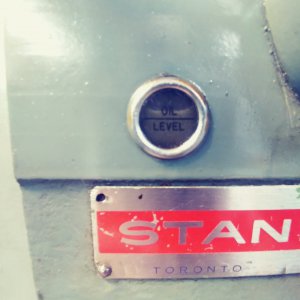- Joined
- May 6, 2020
- Messages
- 63
Hi there
I am running my SM series 2000 lathe since a few days ago, I noticed that the fast it runs the lower oil level is in the window, after turning off the lathe, the level comes back in the window buy wit a noticeable foaming.
I ran it with the upper cover open, I noticed that the input shaft gears are full in the oil sump and they pump it hard so, even if they are not all engaged, they form a sort of oil ring around them and they brew so hard the oil that haevy foam is formed.
Is it normal??
I have tried the recommended sae30 non detergent oil and as it is old and the headstock gears are worn I put a slight heavier oil doesn<t matter the oil it is the same foam formation and lost in level.
Running the lathe at mid speed, the oil window is empty, I guess it can t be normal.
Could you advice?
I am running my SM series 2000 lathe since a few days ago, I noticed that the fast it runs the lower oil level is in the window, after turning off the lathe, the level comes back in the window buy wit a noticeable foaming.
I ran it with the upper cover open, I noticed that the input shaft gears are full in the oil sump and they pump it hard so, even if they are not all engaged, they form a sort of oil ring around them and they brew so hard the oil that haevy foam is formed.
Is it normal??
I have tried the recommended sae30 non detergent oil and as it is old and the headstock gears are worn I put a slight heavier oil doesn<t matter the oil it is the same foam formation and lost in level.
Running the lathe at mid speed, the oil window is empty, I guess it can t be normal.
Could you advice?





